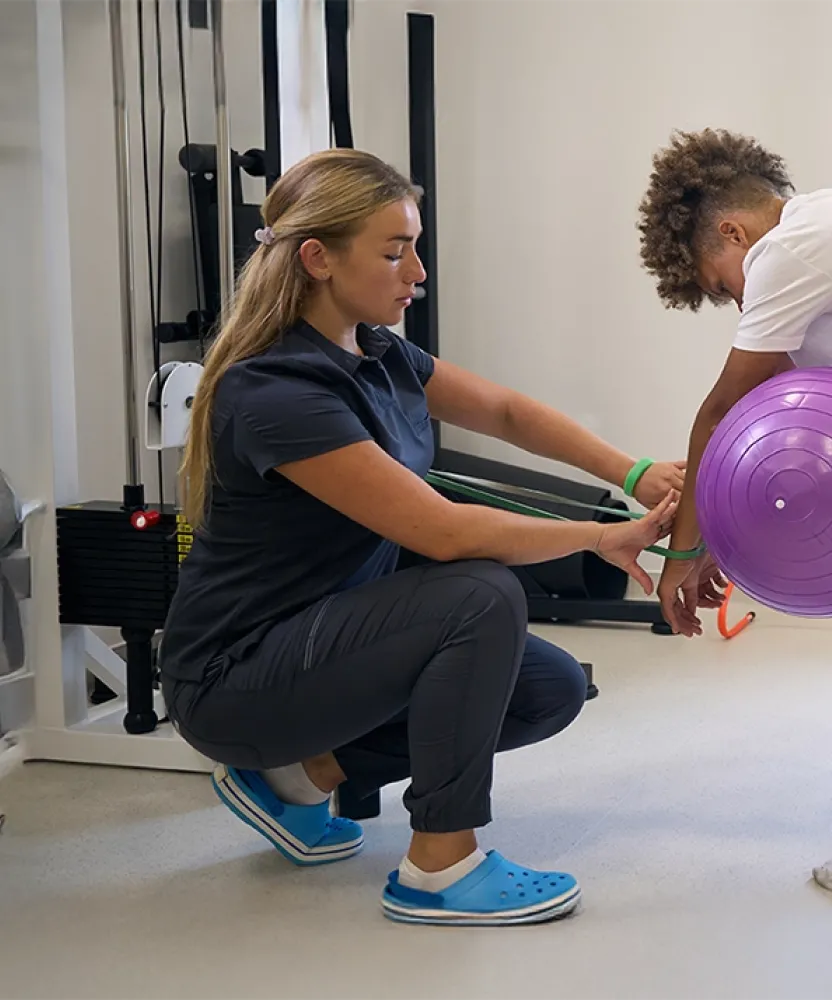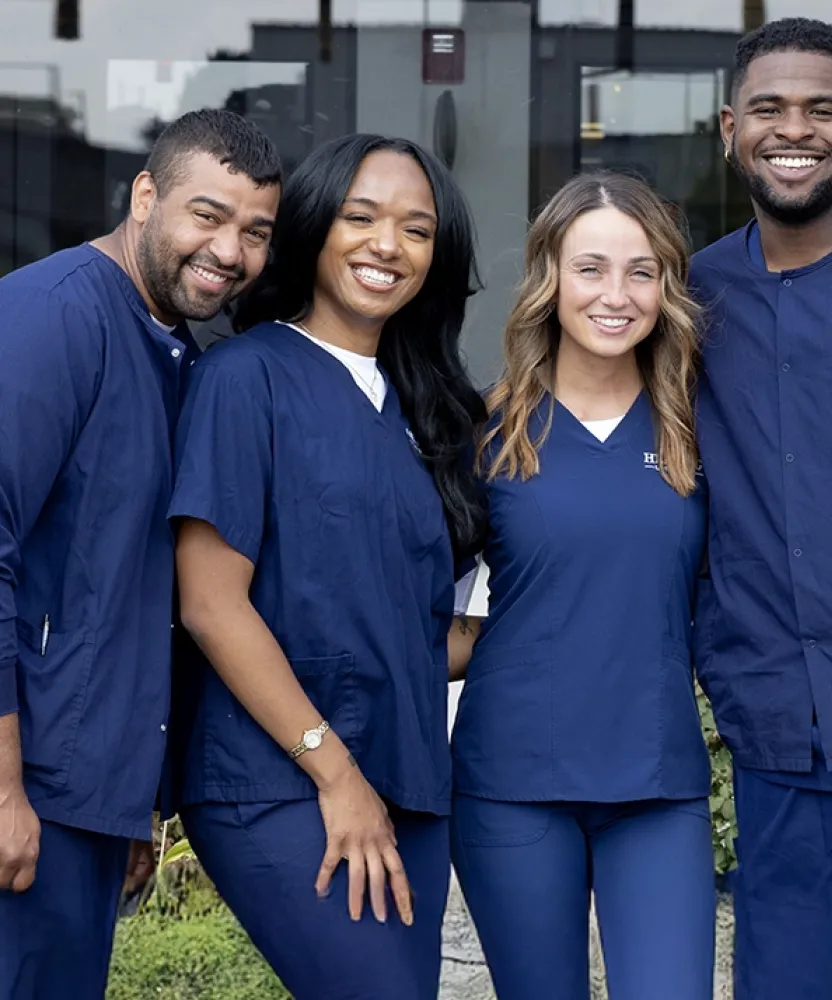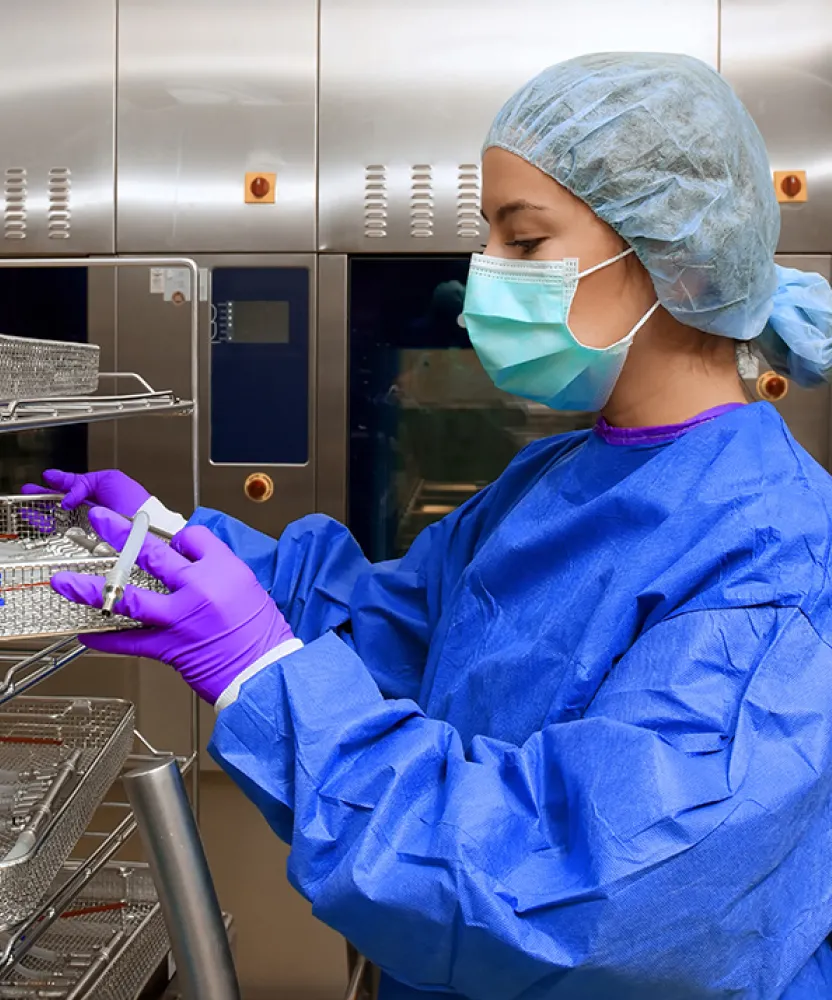Quick facts about the Herzing University Radiologic Technology program
| Format | Online gen eds + live, hands-on learning on campus in Orlando or Tampa |
|---|---|
| Hands-on | Lab and clinical courses put academic coursework to practice, introducing key skills in lab demonstrations with supervised practice in clinical education |
| Transfer credit | Transfer up to 57 approved credits from prior college coursework |
| Certification | Curriculum designed to prepare you for the national registry exam offered by the American Registry of Radiologic Technologists (ARRT) |
| Accreditation | Accredited by the Higher Learning Commission |
| QuickPaths | Start date every 8 months; pathways to continue advancing your allied health education at the bachelor’s degree level and beyond |
Learn More Today!

Satisfaction rate
Our overall student satisfaction rate, according to the 2024 Herzing Graduate Survey.
Technology with a human touch: make a career of your unique skillset as a radiologic technologist
The Associate of Science in Radiologic Technology is a 76-credit undergraduate program which prepares you for a career as a radiologic technologist. The associate degree program provides students with fundamental knowledge and skills in the principles of radiography, radiographic procedures, radiologic pathology, cross-sectional anatomy, and much more.
Discover the career-focused knowledge and skills required to succeed in the growing field of radiologic technology.1 Healthcare institutions need versatile, skilled professionals like you to deliver better patient experiences and improve outcomes. You can become part of it and begin making your contribution as a rad tech. The first step is your education.
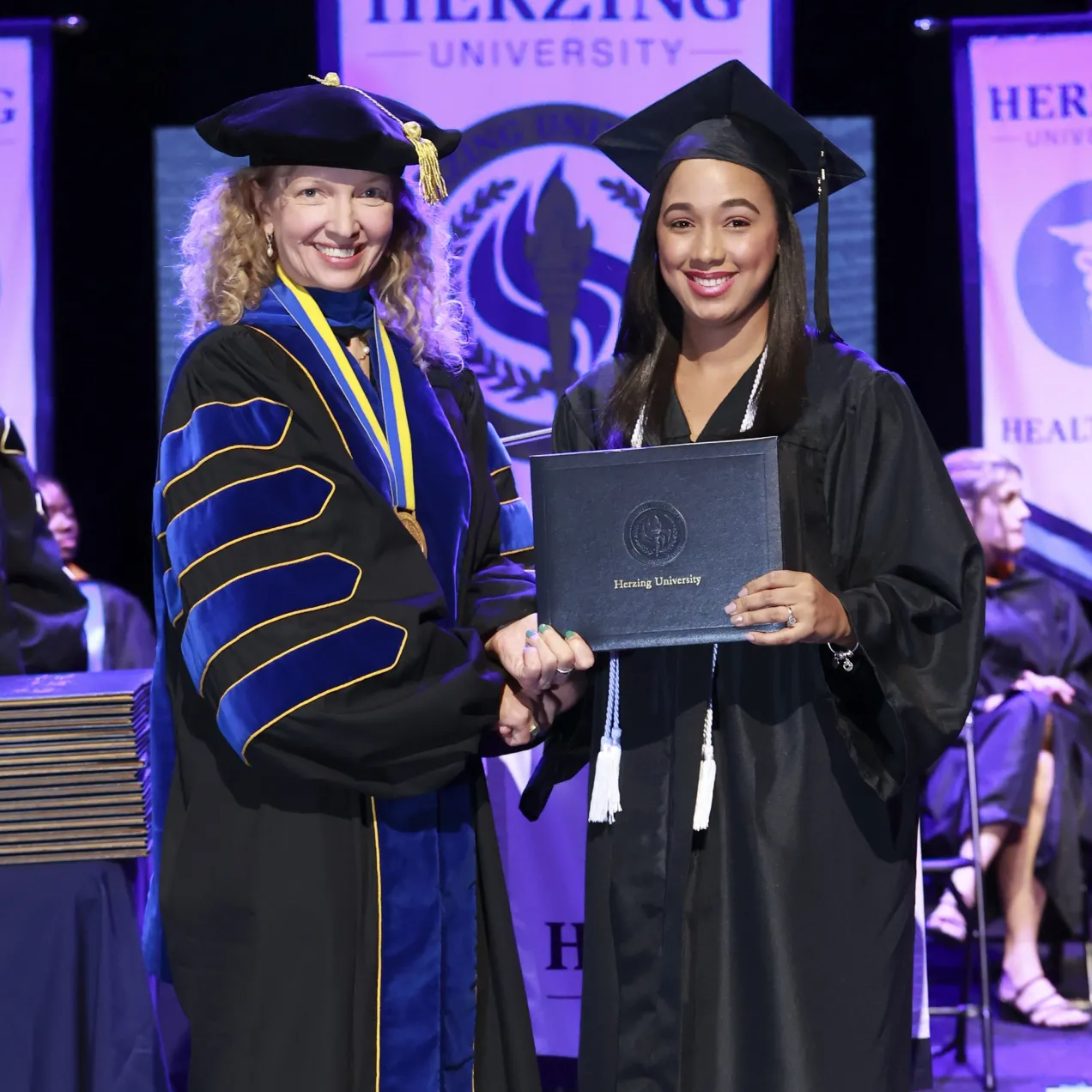
Career-focused curriculum
Discover the crucial knowledge and skills required to succeed in your work and build a foundation for continued career growth.
Flexible schedule
We work hard to help you maintain school-life balance, striving to be as flexible as possible for busy non-traditional students.
Experienced faculty
Get face-to-face instruction from experienced and credentialed faculty with real-world success in the field.
Lifelong support
We support your ongoing career advancement by providing comprehensive, personalized student services with lifelong career coaching.
Rolling admissions
No application deadlines to worry about. Apply when you’re ready and prepare to get started soon.
Programs
Campus locations

Orlando
Radiologic Technology Program
Herzing University - Orlando
1865 SR 436
Winter Park, FL 32792
(407) 641-5227
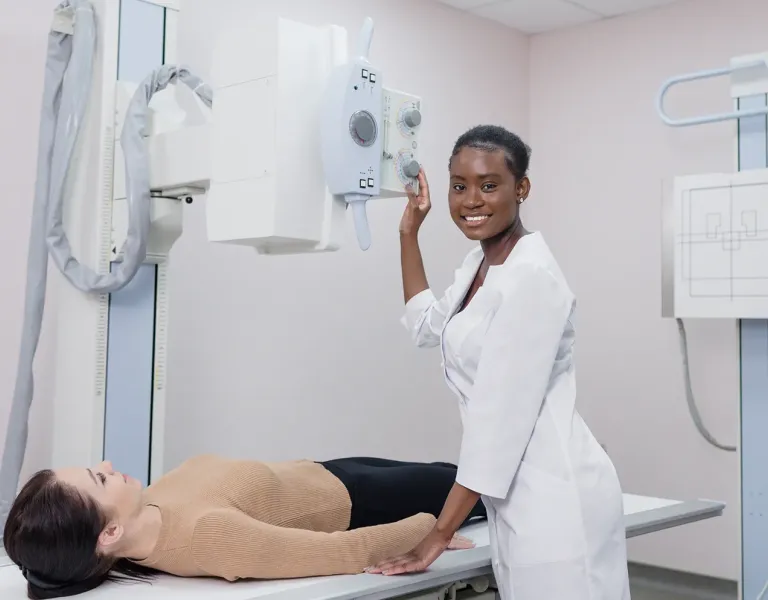
Tampa
Radiologic Technology Program
Herzing University - Tampa
3632 Queen Palm Drive
Tampa, FL 33619
(813) 285-5281
How the program works
Academic coursework
Establish a strong foundation in didactic (lecture-style) courses, including general education courses which are completed online. Course topics include medical terminology, anatomy and physiology, methods of patient care, principles of radiography, and more.
Labs
Labs are demonstrations of procedures delivered in conjunction with respective academic courses, completed on-campus in Orlando or Tampa. These in-person demonstrations are your initial introduction to putting theoretical concepts into practice before advancing into a real clinical environment.
Clinical education
Build upon what you’ve learned in theory coursework and lab demonstrations and gain supervised experience in the field. The curriculum includes 700+ total contact hours across 6 courses, ensuring time to establish the basics and methodically advance to achieving AART required competencies.
Waived Enrollment Fee
Discover the educational pathway designed to maximize your career potential. Reach for greater heights with Herzing University.
Faq
Frequently Asked Questions
Didn't find the answer to your question? Send us an inquiry and we will be happy to answer all your questions!
According to the Bureau of Labor Statistics, radiologic technologists earn an average salary of $79,760 per year ($38.35 per hour).* In the state of Florida, the average salary is $71,000 per year ($34.13 per hour). Average pay depends primarily on where you work, your level of experience and where you practice.
If you’re just starting as a radiology tech straight out of college, expect to build some experience before reaching the average. Prove yourself as an excellent radiologic technologist, continue striving to be the best, and you’ll have the potential to keep improving your pay.
While radiologic technologist and radiologist sound like similar careers, they are actually quite different. A radiologist is a doctor who interprets medical images, such as X-rays and MRIs, diagnoses patients and recommends treatment. A radiologic technologist is typically supervised by a radiologist and supports the doctor and other members of the healthcare team by performing the diagnostic imaging procedures.
Radiologists must also attend medical school. Radiologic technologists, on the other hand, can begin their career after completing a two-year associate degree program in radiologic technology. With additional experience and education, they can go on to specialize in areas like mammography, MRI or cardiovascular imaging.
A career as a radiologic technologist is an excellent choice for anyone who wants to help others, has a passion for working with technology and is interested in joining the healthcare field quickly. In fact, U.S News and World Report rank radiologic technologist as #31 in Best Health Care Jobs for 2025.
No, you cannot earn a degree in radiologic technology 100% online. However, you can complete your general education classes online on your own schedule.
Our goal is to empower you to excel in your new career. The hands-on experience at Herzing’s on-campus lab and clinical sites are crucial to fully prepare you for your first job in your chosen field.
With Herzing University you are never alone – an affordable, career-focused education is within your reach. We offer scholarships, grants and loan options for eligible students looking to empower themselves to reach the next level in their career.
View all of our financial aid options and calculate a quick estimate for your potential tuition & expenses using our tuition wizard.
Radiologic technologists operate X-ray machines, and with additional training use digital mammography machines, computed tomography (CT) machines, as well as magnetic resonance imaging (MRI) scanners and other types of medical imaging equipment. Radiographers may also specialize in fluoroscopy or angiography.
The job description for a radiologic technologist can include:
- Preparing the patient for the exam by explaining the procedure.
- Positioning patients so that the parts of the body can be appropriately radiographed.
- Setting controls on the machine to produce images of the appropriate density, detail, and contrast.
- Placing the imaging plate under the part of the patient’s body to be examined and make the exposure.
- Using a computer to develop and manage x-ray images.
- Providing basic patient care.
- Performing trauma and surgical x-ray procedures.
Radiologic technologists are on their feet for long periods of time and have to help or lift disabled patients. Although there are radiation hazards present, these are minimized by proper radiation protection practices, including the use of lead aprons, and other shielding devices. In addition, technologists wear badges that measure radiation levels in their work area and detailed records are kept on their cumulative lifetime dose. Technologists must be able to move, push, and manipulate equipment. They must also be comfortable working on a computer.
Work environment
Most full-time radiologic technologists work about 40 hours a week. They may, however, have evening, weekend, or on-call hours. In a hospital setting, technologists may work a full-time night shift or weekend shift, and alternating these shifts may be required. Opportunities for part-time and shift work also are available and new graduates may start with a PRN status, with variable days and hours.
The biggest difference between a radiologic technologist and technician is their level of education and scope of responsibilities.
Technologists (also called radiographers) typically hold an associate or bachelor’s degree and carry extended capability to perform many kinds of diagnostic imaging procedure: x-rays, CT scans, sonograms, mammograms, etc. With an associate degree you may cross train into these types of specialties. Cross training may be done on the job or on your own and does not require an additional degree.
Technicians are more limited in what procedures they can perform depending on the state in which they practice. Technicians generally do not have a degree and often have no formal training. In the state of Florida, technicians are considered to have limited scope and may not work in hospitals or emergency rooms.
The Bureau of Labor Statistics (BLS) projects the need for radiologic technologists will rise 4% from 2024-2034, higher than the national average across all occupations.*
The BLS cites the growth of the baby-boom population as a key factor in driving up demand for medical imaging, increasing the importance of available radiologic and MRI technologists.
The Herzing University Radiologic Technology program takes an average of 24 months to complete. Once you have earned your associate degree you will be eligible to take the national registry exam offered by the ARRT and for Florida State Licensure.
Meet Our Leadership

"A degree in radiologic technology will prepare you for a career that targets both your interest in healthcare and technology advancements. A radiologic technologist career path can be the start of one with many opportunities, including careers in CAT Scan, MRI, Cardiac Catheterization Laboratory or Interventional Radiology.
All of this is possible at Herzing University in just 2 years with our Radiologic Technology Associate’s Program!"
Tiffany Kemper B.S., RT (R) (ARRT)
Program Chair - Radiologic TechnologyA passionate educator and experienced radiologic technologist currently serving as Program Chair of Radiologic Technology, Ms. Tiffany Kemper has mastered the skills necessary to work alongside surgeons in the operating room and work independently in a hospital diagnostic imaging setting. This Herzing University alumni received her associate degree in radiologic technology from Herzing – Orlando in 2017 and her bachelor’s in health sciences – pre-clinical from University of Central Florida. She is now pursuing her master’s in healthcare administration through Herzing University. After Herzing supported her in reaching her goals as a radiographer, Ms. Kemper is dedicated to returning those opportunities to future generations of radiologic technologists.
The Student Experience at Herzing
"What I value the most is my clinical experience. I'm very hands-on and was able to apply what I was learning easily."
Michelle Tomlinson
Healthcare Student | Orlando CampusIf anyone needs some advice: don’t give up when times get hard. Study, study, study!
Jessica Stout
Healthcare Student | Orlando CampusI was looking for a career where I could be an important part of caring for patients. Learning about the different bones, structures and much of the body was fascinating to me, so I knew that this program was what I wanted to study.
Angella Davis
Healthcare Student | Orlando CampusRecent Blog Posts
Disclosures
- According to the Bureau of Labor Statistics, employment of radiologic technologists and technicians is expected to increase 6% from 2023-2033.* Projections Central estimates an increase of 12.8% in the state of Florida from 2022-2032.**
Herzing University is accredited by the Higher Learning Commission (hlcommission.org), an institutional accreditation agency recognized by the U.S. Department of Education.
View Herzing University Accreditation and Approvals
* BLS pay estimates calculate the median annual wage for various occupations. Per the BLS the median wage for an occupation is: "The wage at which half of the workers in the occupation earned more than that amount, and half earned less. Median wage data are from the BLS Occupational Employment and Wage Statistics survey." Bureau of Labor Statistics (BLS), U.S. Department of Labor, Occupational Outlook Handbook 2024. BLS median wage estimates do not represent entry-level wages and/or salaries. Multiple factors, including prior experience, age, geographic market in which you want to work, and degree level and field, will affect career outcomes, including starting salary and earnings as an experienced employee. Herzing neither represents that its graduates will earn the median salaries calculated by BLS for a particular job nor guarantees that graduation from its program will result in a job, promotion, particular wage or salary, or other career growth.
** Projections Central, Long-Term Projections (2022-2032). Multiple factors, including prior experience, age, geography market in which you want to work, and degree field will affect career outcomes. Herzing does not guarantee that graduation from its program will result in a job, promotion, or other career growth.
Waived Enrollment Fee
Discover the educational pathway designed to maximize your career potential. Reach for greater heights with Herzing University.

